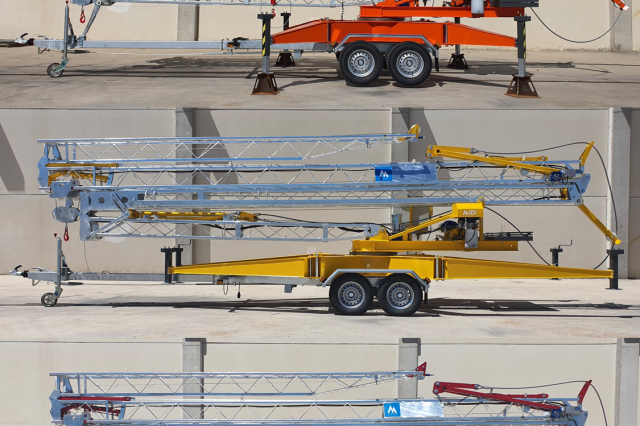TIPS FOR SAFE CRANE OPERATION WITH THE HIGHEST PRECISION STANDARDS
Friday 23 July 2021 - in business
Crane operation, to be safe and efficient, requires skill, the exercise of extreme care and good judgment, alertness and concentration, and rigid adherence to proven safety rules and practices as outlined in applicable and current ANSI and OSHA safety standards.
Every crane operator, including those involved in slinging loads and directing lifting operations, must be trained and competent in every facet of crane operations.
There are four key points that employees must be aware of in safe crane operation:
- How to plan and manage lifting operations
- The development of safe procedures for working with cranes
- How to supervise lifting operations properly
- Examining and reviewing operations and processes carefully

What Safe Crane Operators Need to Know
Although tower and mobile cranes are used extensively on many construction projects, they present three significant dangers:
- Crane collapse – these incidents create tremendous potential for multiple fatal injuries, to both employees and bystanders;
- Load falling or sling line snapping – Due to the height of the tower cranes, there is a possibility that high winds and tight spaces might make loads fall which would create a significant potential for death or major injury.
- Accidents due to lack of awareness or communications – There have been incidents where people have been struck by moving loads, or even cranes contacting overhead electrical wires.
In many cases, it’s usually the crane operator and supervisor who assume legal responsibilities for safe lifting operations. When a crane is hired, the responsibility for planning, supervising and carrying out lifting operations rests with the operator, or by the crane hire company if they explicitly state so in their contract with the crane operator.
One point to be aware of is that customers who hire cranes may not have the necessary skills or experience for safe planning of crane operations and will most likely opt for a ‘Contract Lift’ from the crane hire company.
Planning Lifting Operations
It goes without saying that all safe crane operations must be planned in advance. This means that all foreseeable risks are addressed, and the safety of bystanders and employees are accounted for. The supervisor should have practical and theoretical knowledge including extensive experience of the lifts being undertaken.
By doing a risk assessment, identifying the resources required, setting up procedures, and assigning responsibilities, the supervisor verifies that any lifting operation can be carried out safely. The operational plan should include that the lifting equipment remains safe for the range of lifting operations for which the equipment might be used.
Safe Crane Operations
A crane operator must plan lifting operations carefully to ensure they are carried out safely. This plan should result in a safe system of work that may need to be written down if it is a complex lift. This record is sometimes known as a “method statement” and crane operators should ensure that everyone involved understands it.
The method statement should include:
- The planning details. This includes site review, preparation, crane assembly and dismantling;
- Identifying the proper equipment. This means the selection and use of the correct crane and other work equipment such as slings and signaling equipment.
- Maintenance and care. The maintenance and care of the crane and other equipment should be scheduled and there should be a plan to address any potential issues. Also a documented process should be created for every examination and movement of the crane.
- Safety measures. Any safety measures implemented to secure safety of the general public and any employees not involved in the lifting.
The right level of supervision must be in place for lifting operations, reflecting the degree of risk and personnel involved in the particular lifting operation. A competent crane supervisor should have sufficient work experience to carry out all duties and must have taken the relevant courses and certifications. They also must have the authority to stop any lifting operations should it become too dangerous to proceed.
Thorough Examination
There are strict legal requirements concerning the thorough examination of all cranes: Lifting equipment must be thoroughly examined at the prescribed intervals. This entails a detailed and specialized examination by a competent person.
The examination will usually be arranged by the crane hire company, although it is the responsibility of the crane user to ensure that all necessary examinations are carried out and that the required reports are in order. Records of thorough examinations and tests must be: readily available to enforcing authorities; secure; and capable of being reproduced in written form.
Each crane operator is held directly responsible for safe crane operation. Whenever there is any doubt as to safety, the operator should stop the crane and refuse to handle loads until safe conditions have been restored.
Much like a drivers license, there are minimum standards that every crane operator must adhere to. Crane operators must be at least 18 years of age and must also have good hearing and peripheral vision. These attributes are necessary for safe crane operation.
